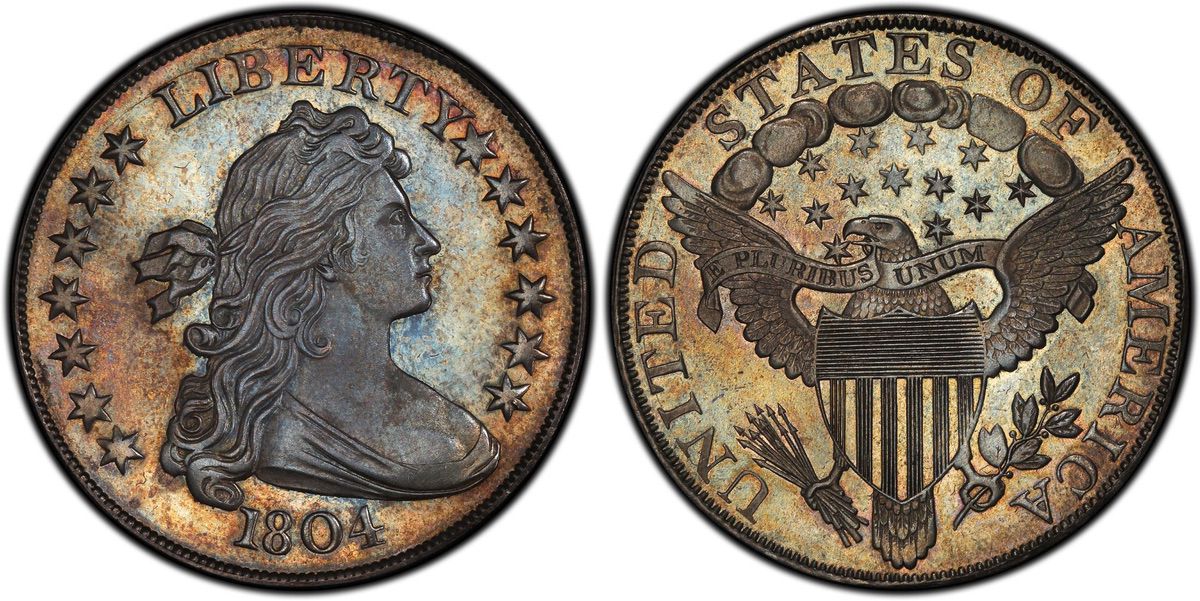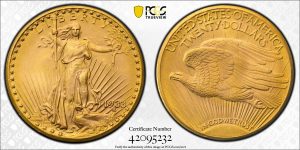The last two years have been a wild ride. Anyone who predicted what would have happened should be picking lottery numbers. For the rest of us, the predictable (i.e., the U.S. Mint) became unpredictable. The positives had a lot of negatives and what used to be extraordinary is now ordinary.
Without further ado, here are the top five numismatic stories for 2021.
5. Return of the coins shows
 It isn’t easy to have any retrospective of 2021 without acknowledging how COVID-19 has affected the industry. At the beginning of 2021, there were cancelations of shows and other events. As the vaccines became more available and the infection rates declined, the shows returned.
It isn’t easy to have any retrospective of 2021 without acknowledging how COVID-19 has affected the industry. At the beginning of 2021, there were cancelations of shows and other events. As the vaccines became more available and the infection rates declined, the shows returned.
Smaller shows found hotels willing to lease larger rooms to allow the setup of a socially distance bourse. Like the World’s Fair of Money, Larger shows changed to provide for social distancing and limiting contact. Collectors that attended these shows called them a success. Still, the reports may be more emotional satisfaction after a year off.
Coins shows are adapting to an alleged new normal, and collectors are happy to get what they can. While it makes collectors happy, the looming threat of new variants may slow down the shows at the start of 2022.
4. The Positives and Negatives of the U.S. Mint
The U.S. Mint is the source of the items we collect and the biggest frustration experienced by the community. On the one hand, the manufacturing business of the U.S. Mint made it the biggest success story of 2021. Compared to the rest of the manufacturing sector, the U.S. Mint has been running in overdrive since mid-2020. The only manufacturer of United States coinage has produced more money than any three mints in the world combined.Even with the COVID issues, the U.S. Mint could produce the coins required by law, including the 2021 Morgan and Peace Dollars. Unfortunately, selling these coins revealed collectors’ frustrations with the U.S. Mint.
The U.S. Mint’s online order processing system may work without product release. Still, a major product release causes the system to fail. The product release was a perfect storm of a limited supply and a high collector demand. The result exposed how PFSWeb, the U.S. Mint’s contractor, created a system that could not handle the rush.
The U.S. Mint became more communicative with the numismatic press. During this communication, it was clear that Director David Ryder wanted to talk more about the successes. Unfortunately, the failures of the ordering system overshadowed any success. Ryder resigned as Director effective October 1, 2021.
The e-commerce system at the U.S. Mint is broken and needs to be replaced. Unfortunately, the open communications from the U.S. Mint indicate that they are planning to install a bandaid to cover up the system’s problems. Unless the U.S. Mint and PFSWeb make major changes to their online order system, the issues will continue into 2022.
3. 2021 Morgan and Peace Dollars
 Numismatists know that 2021 marked the end of the Morgan Dollar series and the introduction of the Peace Dollar. Morgan Dollars may be the most collected coin in U.S. numismatics. The Peace Dollar was the coin promoted by former ANA President Faran Zerbe with support from the ANA. In 1921, the U.S. Mint produced both coins. What better way to celebrate the centennial is by creating tributes to both coins.
Numismatists know that 2021 marked the end of the Morgan Dollar series and the introduction of the Peace Dollar. Morgan Dollars may be the most collected coin in U.S. numismatics. The Peace Dollar was the coin promoted by former ANA President Faran Zerbe with support from the ANA. In 1921, the U.S. Mint produced both coins. What better way to celebrate the centennial is by creating tributes to both coins.
The tribute idea was popular by collectors suggesting that it would be a high-demand product. But the U.S. Mint found a way to destroy the movement. In a series of missteps, the U.S. Mint allowed its lawyers to restrict their ability to do its job. As a result, the U.S. Mint could not purchase enough planchets to satisfy collector demand.
It is difficult to call the program a success given its problems. But the coins were a sellout, and they continue to do well on the secondary market. The U.S. Mint announced that the program will continue in 2022, and hopefully, it will go better than the 2021 releases.
2. Million Dollar Coins No Longer a Surprise

1804 Class I Original Draped Bust dollar, PCGS Proof-68 and the finest known of its kind, acquired for a client by GreatCollections for $7.68 million. (Photo credit: Professional Coin Grading Service.)
The numismatic market is very active, and the price increase of significant rarities results from the active market. Although the market favors United States coins, the collectors extend their collections to coins made elsewhere. Of the ten-million-dollar coins sold in 2021, four were not U.S. coins.
Here are the coins that sold for more than $1 million in 2021:
| Sale Price | Coin Sold | Date Sold |
|---|---|---|
| $18,900,000 | 1933 Saint-Gaudens Double Eagle (King Farouk provenance) | June 8, 2021 |
| $9,360,000 | 1787 Brasher Doubloon – EB on Wing (ex: Stickney-Ellsworth-Garrett-Partrick) | January 21, 2021 |
| $8,400,000 | 1822 Half Eagle (ex: Pogue) | March 25, 2021 |
| $7,680,000 | 1804 Bust Dollar – Class I (one of 15 known) | August 18, 2021 |
| $5,280,000 | 1804 $10 Proof Eagle (Finest of Three known) | January 20, 2021 |
| $4,750,000 | 1907 Saint-Gaudens Ultra High Relief Double Eagle | April 6, 2021 |
| $2,640,000 | 1825 Russia Ruble Pattern with would-be Emperor Constantine | April 6, 2021 |
| $2,280,000 | 1928 China Pattern Dollar featuring the warlord Zhang Zuolin | April 6, 2021 |
| $2,280,000 | 1937 Edward VIII 5 Pounds Pattern (one of six known) | March 26, 2021 |
| $2,160,000 | 1928 China Pattern “Mukden Tiger” Dollar (one of ten known) | December 11, 2021 |
1. The Double Eagle That Flies Higher

Farouk-Fenton 1933 Saint-Gaudens $20 Double Eagle was sold by Sotheby’s for $18,872,250 in a June 2021 auction. (Picture Credit: PCGS)
Since that sale, several coins sold for more.
On June 8, 2021, Sotheby’s auctioned the Stuart Weitzman Collection, including rare Inverted Jenny Plate Block and the British Guiana One-Cent Black on Magenta stamps. The coin sold for a record $18,872,250.
It answers the question, “What is a coin worth?” What are you willing to pay for it?



As someone who has worked closely with the government for their IT needs over the past 27 years, I’d say not to put too much blame on PFSWeb for a failed ecommerce site. The US Mint is a monopoly and they have no compelling reason to provide a pleasant buying experience. Instead of doing the thing right, they (the Mint) understand the customer has nowhere else to go, making it easy to shift their funding to other pet projects. I’ve seen the VA do this for years – for many years their website was inaccessible to disabled war veterans, despite a law requiring accessibility. A lawsuit threat and a powerful lobbyist threatening to take the story to the Washington Post finally broke things loose. Imagine how easy, in comparison, it is for the Mint to kick the can down the road?
I was a federal contractor for 25 of my 40 years in the computer industry before retiring. For 12 of those years, I worked in the Department of the Treasury and familiar with the internals of the Treasury Bureaus. The situation in Treasury is a bit different from the VA and other Departments. That being said, I know the U.S. Mint has its problems but in this case, there are shared responsibilities between the U.S. Mint and PFSWeb. There’s more to this story that is not appropriate for a public form. Drop me a note if you want to know more.